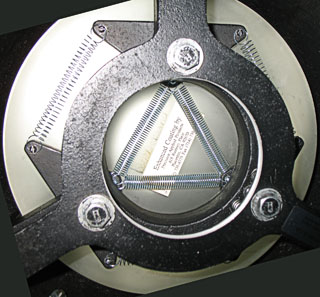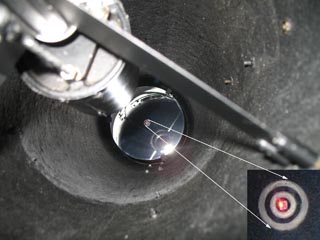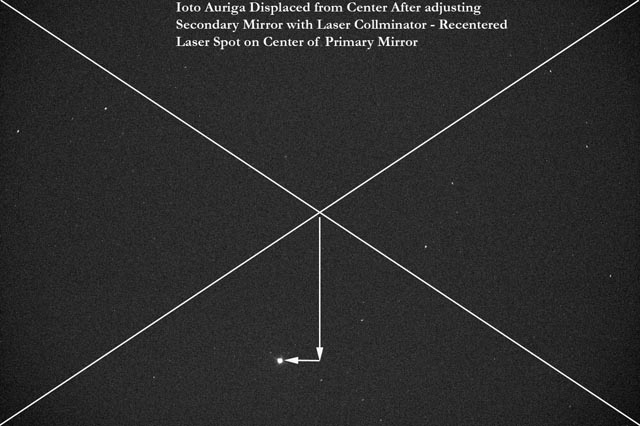| The purpose of this web page is to detail the procedures and results I conducted collimating a 10" aperture Newtonian reflector with a focal speed |
| of approximately F/4.5. The main tools I used to conduct this were a Kendrick's 2" laser collimator, STL11K CCD, and a Cannon A620 P&S digital camera. |
|
|
| Initial collimation was done using the laser collimator by adjusting the Newtonian's secondary mirror screws to make the laser beam coincident with respect |
| to the center of the primary mirror (step 1). The primary mirror screws were then adjusted to make the return beam of the laser coincident with respect to the |
| entrance of point of the laser collimator, by looking at the bottom of the focuser from the front of the scope (step 2); see the Kendrick's Newt. diagram below. |
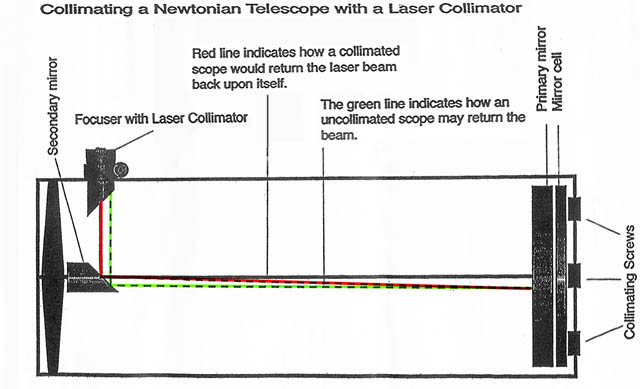 |
| Note that all weights, including the camera itself, were used while collimating. The CCD was hung off the side of the 2" adapter while collimating to replicate |
| weight load as closely as possible; see below. |
| Picture above left is with the camera at the "testing" position. Picture in the middle is a close-up of the camera at the "testing" orientation. Picture on the right |
| Is Newtonian being collimated with Kendrick 2" laser collimator with SBIG STL-11K CCD camera hanging-on focuser to maintain camera weight load. |
|
|
| The primary mirror's support cell was reinforced with springs to assure that the triangular support pads would not change orientation or otherwise move; see |
| image below. |
| High tension springs were introduced in the secondary mirror support to limit movement after adjustment; See below |
| The clips holding the mirror against the mirror cell were reinforced with external lock washers. In any case, these will have to be retightened or otherwise |
| examined before imaging use. The SBIG STL-11000 CCD camera was used to collimate the primary mirror with respect to the center of the CCD's image plane; |
| same collimation adjustment as in "step 2" above. Since this was the actual image/weight load configuration I was imaging with, any difference in collimation |
| between this and using the laser alone would manifest the "delta-Adj" of the imaging system with respect to the laser-optics system under similar weight loads. |
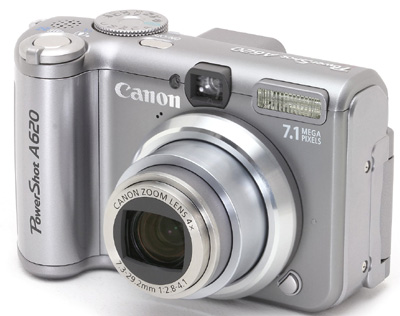
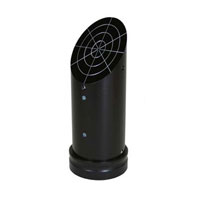
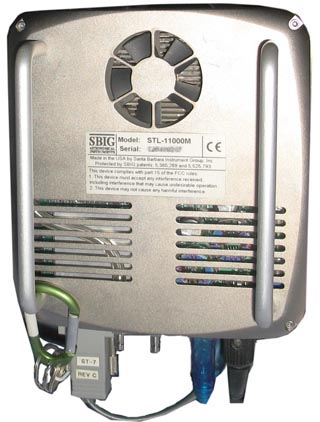
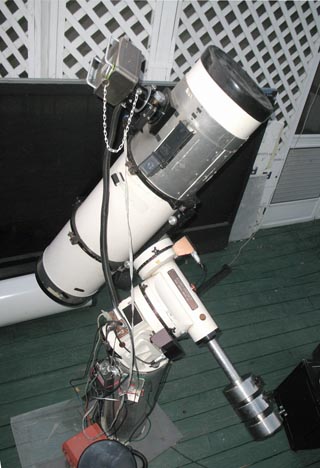
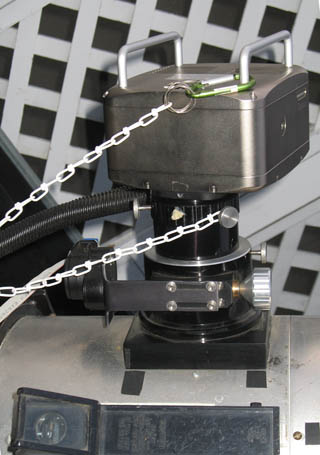
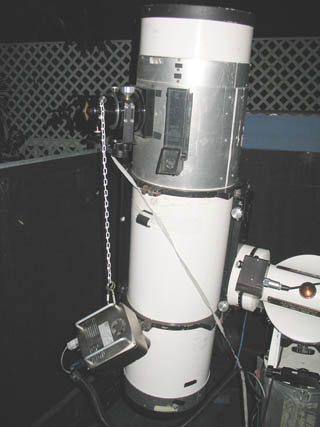
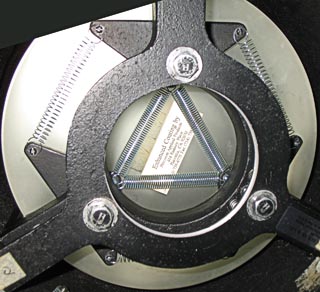
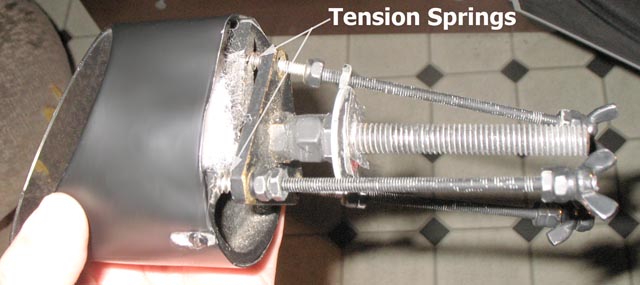
.jpg)
.jpg)
.jpg)
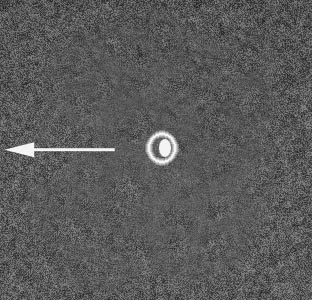
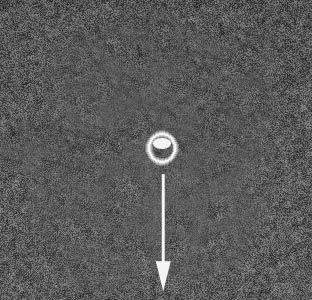
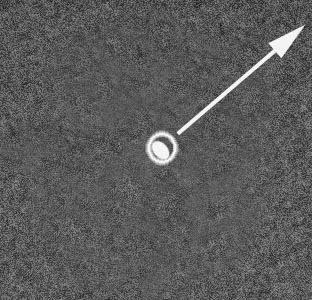
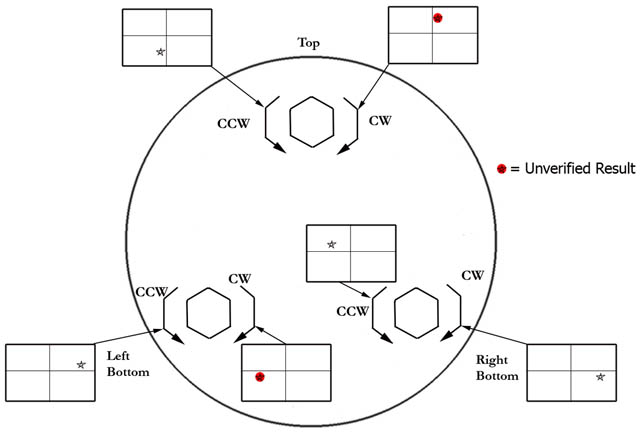
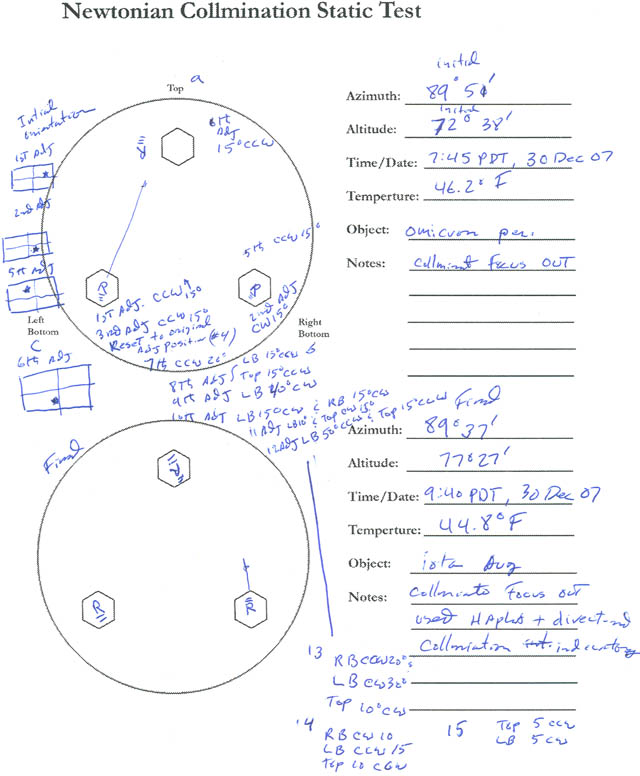
.jpg)
